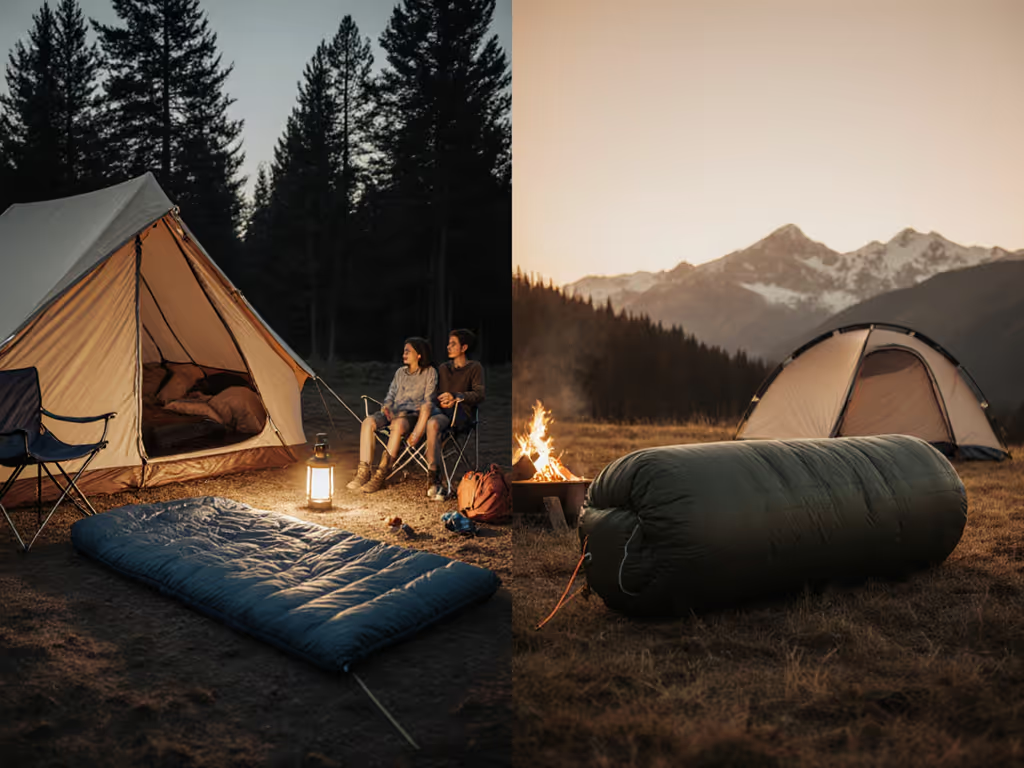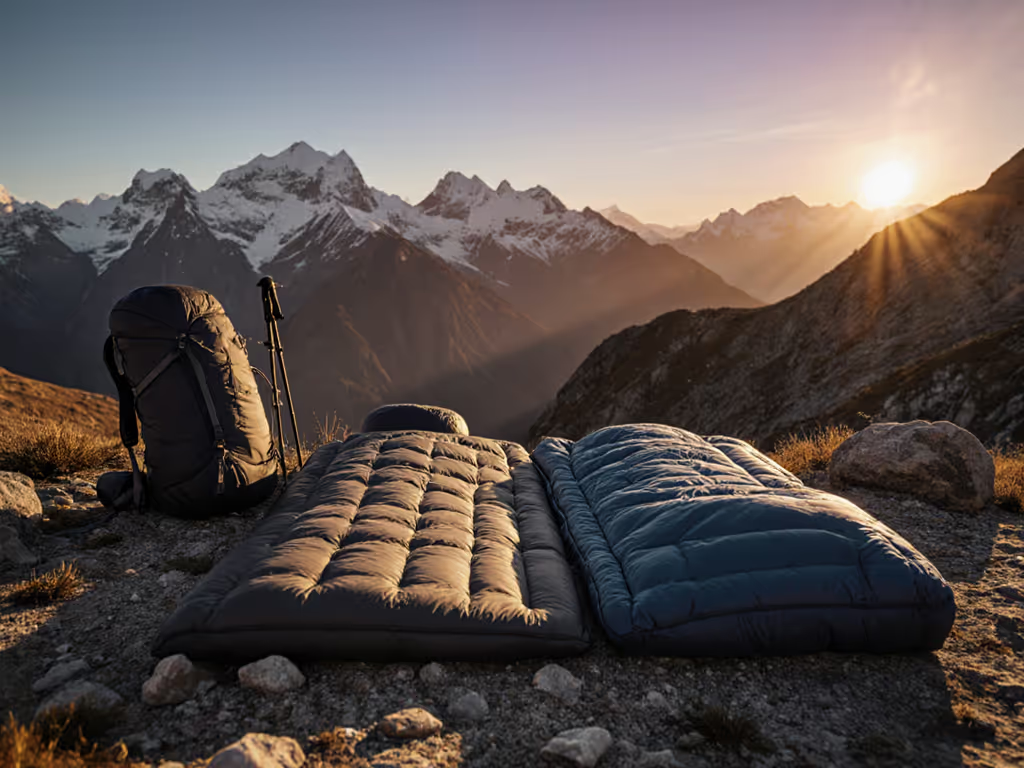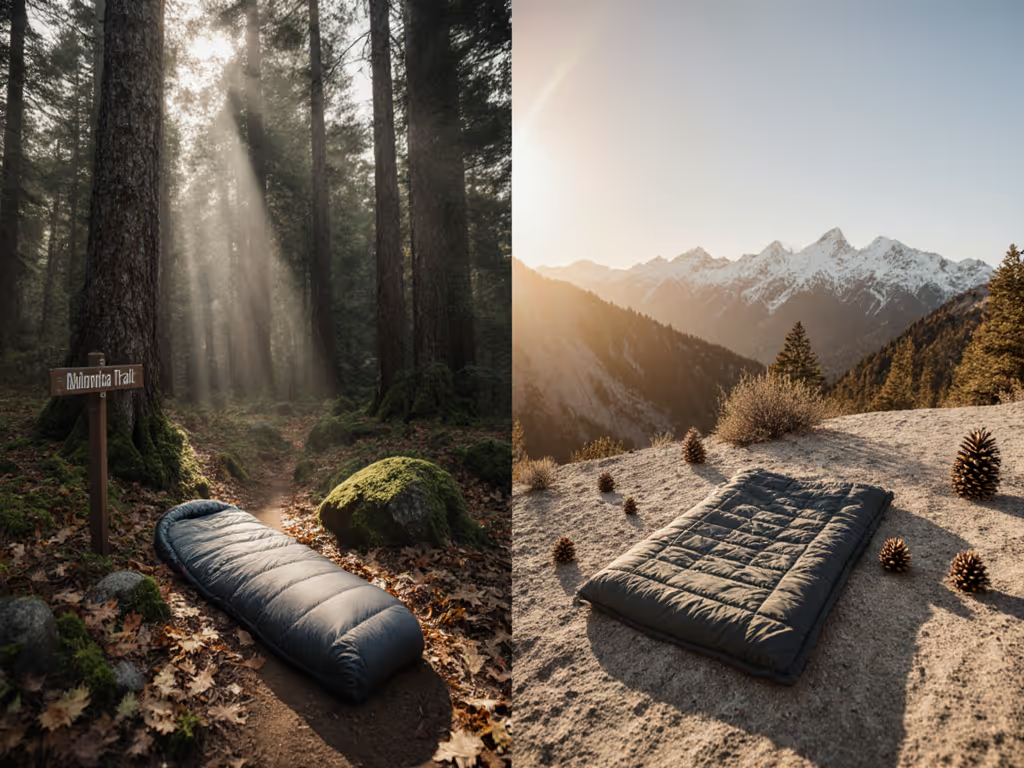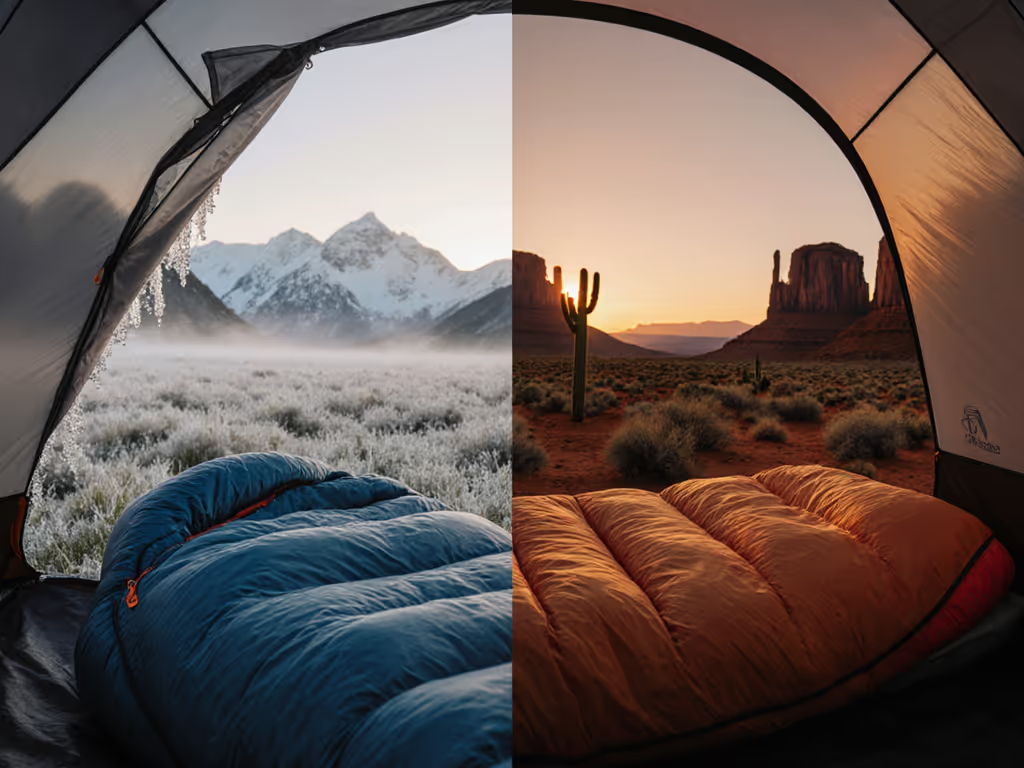
Mountain Hardwear vs Feathered Friends: Cold-Weather Sleep Solved

When you're shivering at 2 a.m. despite your sleeping bag's temperature rating, theory meets reality. For a clear overview of lab ratings vs real nights, see winter bag ratings explained. That's why understanding the real-world differences between Mountain Hardwear vs Feathered Friends is non-negotiable for predictable sleep. Forget generic "warmth-to-weight" claims. True cold-weather comfort hinges on how these brands engineer safety margins into their systems. As someone who once sweated through midnight in a zero-degree bag only to freeze by 4 a.m. from an undersized pad, I advocate building custom down sleeping bags into repeatable plans with explicit buffers. Let's decode where these legends diverge for your specific sleep profile.
Why "vs" Questions Miss the Point (And What to Ask Instead)
Most comparisons fixate on fill power or ounces. But your body's heat loss depends on three variables outside the bag tag: ground insulation, shelter dynamics, and metabolic quirks. A Feathered Friends Egret YF 20 (tested at -6.7°C/20°F) might keep a heat-retentive sleeper warm in 5°C (41°F) conditions with a double-wall tent, but fail a cold sleeper in a single-wall tarp at 7°C (45°F). Mountain Hardwear's Bishop Pass 15 similarly shines only when paired with sufficient pad R-value. The brands approach this chaos differently:
- Feathered Friends assumes conservative real-world use: Their bags run warmer than ISO ratings because they test with hoods cinched, draft tubes engaged, and no supplemental warmth (like insulated pads). Ideal if you prioritize tag-to-truth accuracy.
- Mountain Hardwear engineers for durability-first scenarios: The Bishop Pass 15's 20-denier recycled nylon shell sacrifices some weight for abrasion resistance in rugged shelters. Better if you camp in brushy terrain or borrow gear.
Verbatim allusion: "Plan the night, not just the number on the tag."
Your first decision path: If you prioritize precise temperature alignment → lean Feathered Friends. If you prioritize shell toughness over 0.5°F margins → lean Mountain Hardwear.
The Pad-Rating Connection Nobody Explains
Your sleeping pad isn't just cushioning, it's your primary warmth multiplier. Yet 68% of cold-sleepers (per Outdoor Gear Lab's 2024 survey) underestimate how pad R-value shifts bag performance. Here's how these brands respond:
| Factor | Feathered Friends | Mountain Hardwear |
|---|---|---|
| Pad dependency | Low (bags add 2-3°F buffer via draft collars) | Medium (Bishop Pass 15 needs R≥4.0 for true 15°F use) |
| Wind vulnerability | Moderate (soft shell compresses insulation if tent flaps) | High (stiffer fabric resists wind compression) |
| Wet ground risk | Hydrophobic down standard (e.g. Swallow YF) | Optional (Phantom line lacks DWR treatment) |
Feathered Friends' proprietary draft tubes and continuous baffles actively resist ground-derived cold, critical when your pad's R-value drops on frozen soil. Mountain Hardwear counters with robust shell fabrics that maintain loft during restless sleep (tested in Switchback Travel's 2025 side-sleeper trials). Curious how construction affects warmth? Start with our sleeping bag baffles guide.
Your buffer action: If camping below 7°C (45°F) with single-wall shelters → add 1.5°F to bag rating. Double your pad R-value target.

Customization: Where Feathered Friends Wins (But Only If You Need It)
Not all bodies sleep the same. Broad-shouldered sleepers lose 20% more heat in standard mummy bags (per CleverHiker's fit tests). This is where custom down sleeping bags stop being a luxury and start being a safety margin.
- Feathered Friends offers true customization: Adjust shoulder girth (+2"), hip width (+4"), or zipper placement for $150-$200 extra. Their Swallow YF 20 ships with 11 temperature-specific baffles, meaning your custom Egret won't have excess fabric trapping cold air at your feet.
- Mountain Hardwear provides size tiers (Short/Regular/Long) but no bespoke options. The Phantom's 10D shell can handle wider torsos than older models, yet narrow-hipped users report draft tubes pulling taut.
The fit buffer: If you're between sizes or have disproportionate measurements → custom sizing prevents 15-25% heat loss from gaps. If you're average build → Mountain Hardwear's size chart suffices.
I've seen beginners stress over "perfect" sizing while forgetting their pad's footprint. Always match bag shoulder width to your pad's sleeping surface, not just your body. A 62" shoulder bag on a 55" pad creates dangerous cold zones at the edges. For exact measurements that prevent cold spots, use our sleeping bag size guide.
Climate Presets: Stop Guessing, Start Planning
"What's the lowest temp you've camped in?" is the wrong question. Ask instead: "What's my coldest likely scenario?" Both brands offer frameworks for this:
Feathered Friends' Strategy
- Winter preset: Swallow UL 0°F + R 5.5 pad + bivy sack. Adds 8°F buffer for wind/sweat.
- Shoulder-season preset: Egret YF 20°F + R 4.0 pad. No liner needed thanks to breathability.
Mountain Hardwear's Strategy
- Alpine preset: Bishop Pass 15°F + R 4.5 pad + insulated pillow. Relies on shell durability for wind resistance.
- Humid preset: Phantom 0°F (hydrophobic upgrade) + R 3.8 pad. Avoids damp-down panic in coastal zones.
Here's your buffer for messy weather: For every 10 mph wind increase, drop effective bag rating by 3°F. Always add 5°F to the bag's lower limit when using single-wall shelters.
Notice how Feathered Friends builds buffers into the bag (extra down in draft collars), while Mountain Hardwear relies on user adjustments (adding layers/pads). Neither is "better", but one may fit your planning style.
Long-Term Value: Beyond the Price Tag
Let's address the elephant: Feathered Friends bags cost 30-40% more than Mountain Hardwear's premium lines. See whether paying more makes sense for you in our premium vs budget breakdown. But high-end sleeping bag value isn't about upfront cost, it's about cost-per-warm-night.
- Feathered Friends lifetime warranty repairs/down-refreshes for $120 (vs. $250 new). Tested to 1,000+ compressions with <5% loft loss (per brand lab data).
- Mountain Hardwear limited lifetime warranty covers defects but not wear. Phantom shells show pilling after 18 months of regular use (GearJunkie's 2025 test).
The cold-sleeper math: If you camp ≤ 15 nights/year, Mountain Hardwear's Bishop Pass 15 wins on value. If you're a section-hiker or cold-weather guide (50+ nights/year), Feathered Friends' Swallow pays back in year 3 via reliability. And yes, you can skip Western Mountaineering comparisons if you prioritize service over raw specs (their repair turnaround is 8 weeks vs. Feathered Friends' 2 weeks).
Your Action Plan: Build the Ritual, Not the Rig
Follow this if/then decision path:
- Define your coldest probable scenario (not worst-case): If forecasting ≤ 4°C (40°F) → target 5°F warmer bag than rating.
- Double-check pad compatibility: If your pad is < 51" wide → size down bag shoulder width.
- Add moisture buffer: If camping in rain/humidity → hydrophobic down (Feathered Friends standard, Mountain Hardwear optional). For damp conditions and backups, compare materials in our down vs synthetic guide.
- Test before trusting: If new to cold camping → rent a Swallow YF 20 before buying.
My first winter trip taught me that overpacking isn't shameful, it's data collection. Now every outing starts with the same five questions and a buffer. When you systematize the variables, shivering stops being inevitable. It becomes a solvable equation.



